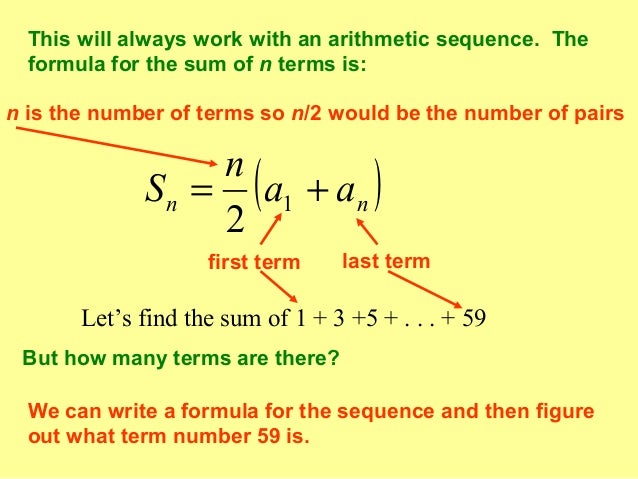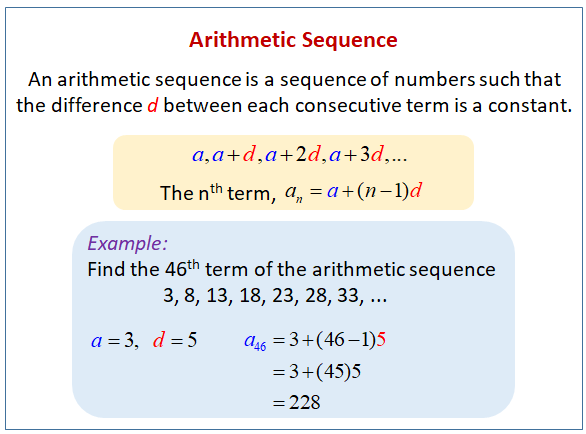

Use the information below to generate a citation.


Then you must include on every digital page view the following attribution: If you are redistributing all or part of this book in a digital format, Then you must include on every physical page the following attribution:

If you are redistributing all or part of this book in a print format, Want to cite, share, or modify this book? This book uses the You can choose any term of the sequence, and add 3 to find the subsequent term. In this case, the constant difference is 3. The sequence below is another example of an arithmetic sequence. For this sequence, the common difference is –3,400. Each term increases or decreases by the same constant value called the common difference of the sequence. The values of the truck in the example are said to form an arithmetic sequence because they change by a constant amount each year. In this section, we will consider specific kinds of sequences that will allow us to calculate depreciation, such as the truck’s value. The truck will be worth $21,600 after the first year $18,200 after two years $14,800 after three years $11,400 after four years and $8,000 at the end of five years. The loss in value of the truck will therefore be $17,000, which is $3,400 per year for five years. After five years, she estimates that she will be able to sell the truck for $8,000. One method of calculating depreciation is straight-line depreciation, in which the value of the asset decreases by the same amount each year.Īs an example, consider a woman who starts a small contracting business. This decrease in value is called depreciation. The book-value of these supplies decreases each year for tax purposes. Use an explicit formula for an arithmetic sequence.Ĭompanies often make large purchases, such as computers and vehicles, for business use.Use a recursive formula for an arithmetic sequence.Find the common difference for an arithmetic sequence.The constant between two consecutive terms is called. Sequences come up all the time in real life, so the 𝒏th term rule can really come in handy. An arithmetic sequence is a sequence where the difference between any two consecutive terms is a constant. The 𝒏th term rule can be expressed as 3𝒏 + 8, with 𝒏 representing the term needing to be found. To find the 93rd term multiply the common difference, 3 by 93, and then add 8 to get the answer, 287
Arithmetic sequence meaning plus#
Subtracting the number in the times table from the term results in a constant difference of plus eight between the table and the sequence.ģ + 8 is 11, 6 + 8 is 14 and so on. Since the common difference is three, start by comparing the sequence to the three times table. The 𝒏th term is a way of using the position of a term in a sequence, to find out what that term would be. This is where the 𝒏th term rule comes in handy. For example, what the 93rd number is and it would take ages to add three 92 times. It might be necessary to work out a number much later in the sequence though. In the sequence 11, 14, 17, 20, 23, it's plus three because the sequence goes up by three with each term. In this sequence the common difference is -1Ī term-to-term rule can be created to explain the common difference. In the song Ten Green Bottles Standing on the Wall, the sequence goes ten, nine, eight, seven, six and so on, reducing by one each time.
Arithmetic sequence meaning series#
An arithmetic sequence is a series of numbers that go up or down by the same amount each time.


 0 kommentar(er)
0 kommentar(er)
